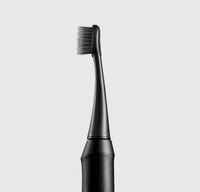GUM Brush**: An Essential Tool for Maintaining Healthy Gums and a Great Routine
Gum brushes, also known as gum pickers or interdental brushes, are small, handheld tools designed for removing dental plaque and food particles from between teeth. They come in various sizes and shapes to fit different interdental spacing and are an important part of good oral hygiene routine.
Why Use a Gum Brush?
Good oral hygiene is crucial for overall health. Plaque, a sticky film of bacteria that forms on the teeth, can harden into tartar if not removed regularly. Tartar can increase the risk of dental caries, periodontal disease, and other oral health issues. While regular toothbrushing is the most effective way to remove plaque, there are several reasons why some people may benefit from using a gum brush:
Remove More Plaque
Some toothbrushes are better at reaching areas between teeth where traditional brushing may miss. Gum brushes, with their specialized bristles, are particularly good at cleaning in between these tight spaces, reducing the risk of plaque buildup.
Clean Tight Spaces
If you have tight interdental spaces or are prone to periodontal disease, using a gum brush can help you remove more plaque and food particles that may be missed by other dental tools.
Enter Micro-Tight Spaces
Gum brushes are also designed to get into micro-tight spaces, which are difficult for toothbrushes to reach. This is particularly useful for individuals with advanced periodontal disease or those who have had a lot of tooth loss.
Gentle on Gums
Many gum brushes have soft bristles, making them gentle on the gums. This can be particularly important for people who are sensitive to traditional toothbrushes or those who have experienced gum recession.
Convenience
Gum brushes are small and portable, making them easy to take with you and use on the go. This can be helpful for individuals who want to keep their teeth clean without having to make time for a full brush session.
Getting the Most Out of Your Gum Brush
To get the most out of your gum brush, it's important to follow these guidelines:
Use the Right Technique
- Hold the gum brush at a 45-degree angle to your gums.
- Gently move the brush back and forth in short, gliding motions.
- Use a soft-bristled brush for sensitive gums.
- Replace your brush every three to four months or when the bristles start to fray.
Be Gentle
Avoid pushing down on the gums, as this can damage the gums. Instead, focus on moving the brush in a circular motion.
Don'tskimp on Cleanses
Even if you're not able to brush every day, make sure to incorporate some form of interdental cleaning into your daily routine, such as using a gum brush.
Talk to Your Dentist
If you have any concerns about your gum health or are using a gum brush for the first time, talk to your dentist for personalized advice.
Choose the Right Size
Look for a gum brush with bristles that match the size of your interdental space. If you have very tight spaces, choose a brush with ultra-soft bristles.
Maintain Your Brush
Keep your brush clean by rinsing it with water after each use and storing it properly between uses. Don't forget to dry it completely before reshaping the bristles.
Remember the Importance of Regular Check-ups and Cleanings
While a gum brush is an essential tool for maintaining healthy gums, it's important to remember that regular check-ups and cleanings are still vital for keeping your teeth and gums healthy. Your dentist will advise you on the best individualized plan for your oral health, which may include using a gum brush in addition to traditional brushing and flossing.
Final Thoughts
Using a gum brush is an important part of a comprehensive oral hygiene routine. By removing plaque and keeping your teeth clean, a gum brush can help prevent tooth decay and periodontal disease, leading to a healthier, more confident smile. Remember to choose the right size and type of gum brush for your needs, and don't forget to incorporate regular check-ups and cleanings into your ongoing oral health routine.
This article was written by a team of dentistry professionals who specialize in creating informative and engaging content for patients. The information is meant to educate and inform, and should not be used as a substitute for professional dental advice or treatment.






